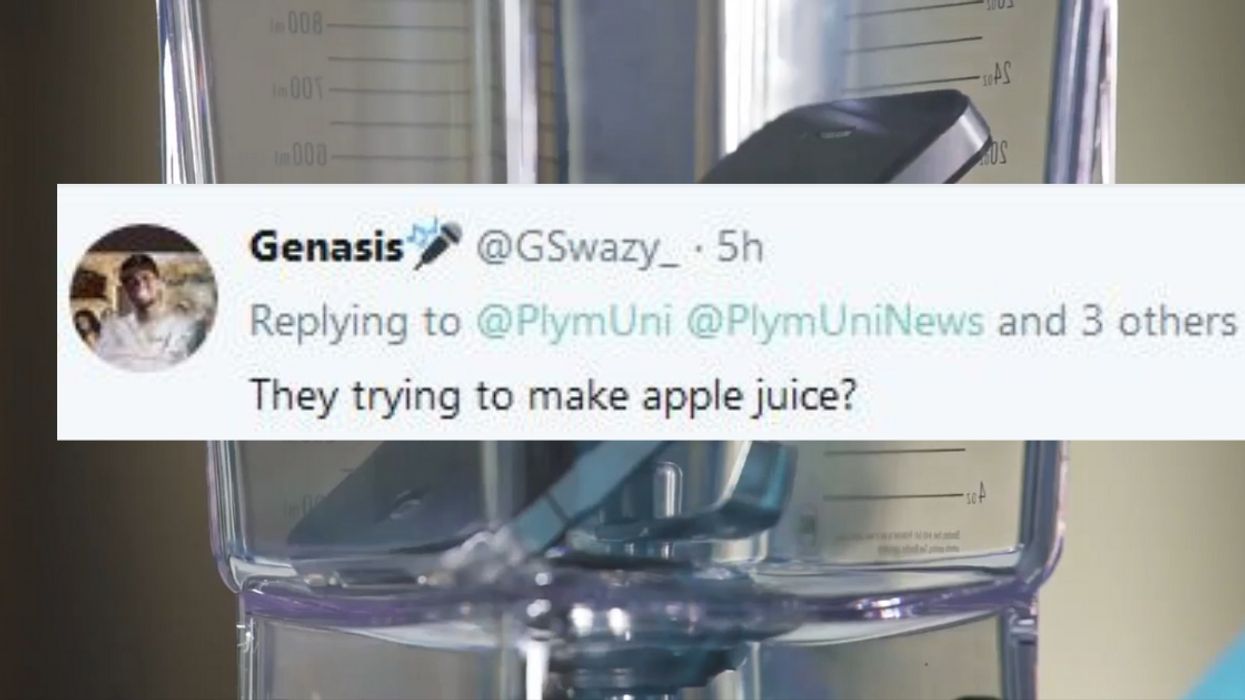Most of us shudder at the thought of harm coming to the $1,000 glass bricks on which we store our lives, but a curious group of scientists at the University of Plymouth decided to reduce a smartphone to dust just to find out what was inside. And they are hoping people will start to pay attention to what they found.
Look around these days and you will find a smartphone in the hands of almost every man, woman or teenager out there, but despite their ubiquity, the average user probably doesn't know much about what makes the devices we are so dependent on work, and even less about what is inside of them.
Geologists at University of Plymouth are hoping to change that.
With the demand for the rare earth minerals used by high-tech devices increasing, Dr. Arjan Dijkstra and Dr. Colin Wilkins from Plymouth's School of Geography, Earth and Environmental Sciences wanted to know more about minerals used in smartphones and just how much of each were packed in there.
The project was a success, but their chances of getting insurance to replace the phone aren't looking too good:
What's in a smartphone?www.youtube.com
To really break down what was inside the phone, Dijkstra and Wilkins first had to break open the phone, and they were far from gentle about it.
After blending the phones to shreds, the researchers reduced what was left to dust in a 500°C furnace so they could perform a chemical analysis.
Although the elements they found didn't surprise them, the quantity of each made them stand up and take notice.
Along with more common minerals like aluminum, copper and iron, the phone contained 900mg of tungsten, 70mg of cobalt and molybdenum, 160mg of neodymium and 30mg of praseodymium.
It's these rarer elements that Dijkstra and Wilkins are hoping consumers will start paying attention to.
"We rely increasingly on our mobile phones but how many of us actually think what is behind the screen? When you look the answer is often tungsten and cobalt from conflict zones in Africa," says Dijkstra. "There are also rare elements such as neodymium, praseodymium, gadolinium and dysprosium, not to mention quantities of gold, silver and other high value elements. All of these need to be mined by extracting high value ores, which is putting a significant strain on the planet."
With a better idea of what is inside their phones and what it takes to obtain these elements Dijkstra and Wilkins are hoping consumers will help push manufacturers towards more sustainable practices.
"Mining can be part of the solution to the world's problems. But we are now in a climate where people are becoming more socially responsible and interested in the contents of what they are purchasing," said Wilkins.
The other half of the solution according to the researchers is increased recycling rates for old phones. The more rare elements that can be reused, the less need there will be to mine more. Fortunately we may already be moving in that direction.
"Partly on the back of this, several of the major mobile phone companies have committed to upping their recycling rates," said Wilkins. "It is a positive sign that the throwaway society we have lived in for decades is changing."
The project may not have done the phone any favors, but Dijkstra and Wilkins' wacky experiment certainly got people talking.
Although many just felt bad for the poor phone.
As far as "breakdowns" go, blending did seem a bit harsh.
But it wasn't without good reason.
All things considered, sacrificing one phone in the name of science seems pretty worth it. With data in hand, Dijkstra and Wilkins also seemed to have accomplished their other goal, getting more people to recycle their old phones.
Now the only question is are they eligible for a free upgrade?









 @homefood_usa/TikTok
@homefood_usa/TikTok @homefood_usa/TikTok
@homefood_usa/TikTok @homefood_usa/TikTok
@homefood_usa/TikTok @homefood_usa/TikTok
@homefood_usa/TikTok @homefood_usa/TikTok
@homefood_usa/TikTok @homefood_usa/TikTok
@homefood_usa/TikTok @homefood_usa/TikTok
@homefood_usa/TikTok @homefood_usa/TikTok
@homefood_usa/TikTok @homefood_usa/TikTok
@homefood_usa/TikTok @homefood_usa/TikTok
@homefood_usa/TikTok @homefood_usa/TikTok
@homefood_usa/TikTok @homefood_usa/TikTok
@homefood_usa/TikTok @homefood_usa/TikTok
@homefood_usa/TikTok @homefood_usa/TikTok
@homefood_usa/TikTok @sarcastic_sunflower76/Threads
@sarcastic_sunflower76/Threads @sarcastic_sunflower76/Threads
@sarcastic_sunflower76/Threads







 Friends Tv GIF
Friends Tv GIF  Turning Away Doom Patrol GIF by HBO Max
Turning Away Doom Patrol GIF by HBO Max  Announce Listen Up GIF
Announce Listen Up GIF  Scooby Doo
Scooby Doo 
 @jessetyler/Instagram
@jessetyler/Instagram @
@ @traveling_gal_712/Instagram
@traveling_gal_712/Instagram @kamillaedwards/Instagram
@kamillaedwards/Instagram @pastrywithjenn/Instagram
@pastrywithjenn/Instagram @jguttler/Instagram
@jguttler/Instagram @qurarshah/Instagram
@qurarshah/Instagram @ruthbl921/Instagram
@ruthbl921/Instagram @acsanti/Instagram
@acsanti/Instagram @aulanirenee/Instagram
@aulanirenee/Instagram @x.seymaaa.x/Instagram
@x.seymaaa.x/Instagram @morganpiriou/Instagram
@morganpiriou/Instagram @modernfamily/Instagram
@modernfamily/Instagram